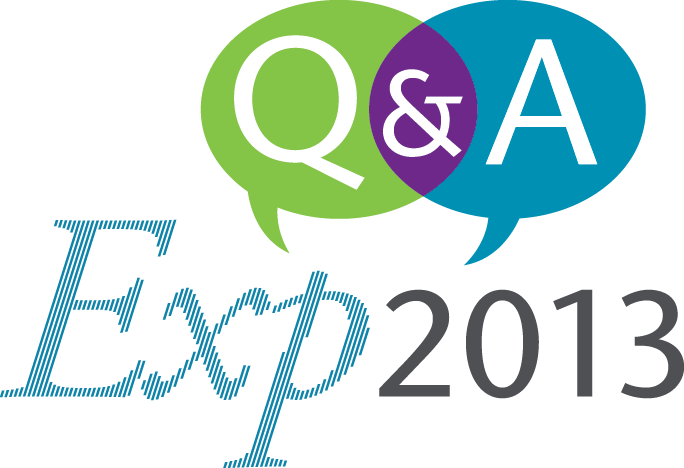Experience 2013: A preview of Textron's session
Building risk management dashboards that drive performance; selecting metrics that are relevant to operations and senior managment
 I recently spoke with Dan Shaughnessy, Director, Disability and Wellness Programs, with Textron, Inc., about the session he'll be leading at the upcoming Aon eSolutions 2013 Experience Conference in Atlanta. Textron is one of the world's leading multi-industry companies, ranking 225th on the Fortune 500 list of largest U.S. companies. Many of Textron's subsidiaries are household names, including Bell Helicopter, Cessna Aircraft and E-Z-GO.
I recently spoke with Dan Shaughnessy, Director, Disability and Wellness Programs, with Textron, Inc., about the session he'll be leading at the upcoming Aon eSolutions 2013 Experience Conference in Atlanta. Textron is one of the world's leading multi-industry companies, ranking 225th on the Fortune 500 list of largest U.S. companies. Many of Textron's subsidiaries are household names, including Bell Helicopter, Cessna Aircraft and E-Z-GO.
Dan and his Textron colleagues have recently launched a new set of workers comp and disability dashboards that have been rethought from top to bottom to serve the true purpose of any dashboard: to drive activity that improves performance and drives costs down.
Dan's experience will be relevant to just about any RiskConsole user, whether they're using dashboards now or are planning to implement them. I'll be joining Dan in this interactive session, in which we plan to encourage a lot of back and forth with attendees. Upon leaving this session, attendees will have a blueprint for effective dashboard building.
What is your planned topic for this session?
Dan Shaughnessy: I intend to discuss the process, from start to finish, of putting effective dashboards in place.
Part of the discussion will focus on how we identified the metrics we spotlight in our workers comp and short-term disability dashboards. We'll discuss how we set them up in the dashboards so they're meaningful to the intended audience, whether that's floor managers, senior management or an audience at any level in between.
We'll talk about what makes a metric good or bad for a particular dashboard. I think it's important to remember that, at a high level, cost is the number one metric for any just about organization; how you show the cost by means of a metric is what differs from company to company.
If you had to boil effective dashboard building down to one key takeaway, what would it be?
Dan Shaughnessy: When it's all said and done, dashboards are only as effective as the metrics they represent. That's why we think its so important to choose metrics that drive performance – in other words, metrics that drive people to take action.
In building our dashboards, we took a step back and evaluated each metric we had been using – many of them for years and years – and asked ourselves whether these metrics really drive performance. Or are we just accustomed to seeing them in our reports?
I think that in risk management, there's often a tendency to think we need to generate as many metrics as possible, so that we can show every little piece of information and prove how important our programs are. But half the time, people don't even care about half the metrics at best! We wanted our dashboards to be concise and something our audiences can take in at a glance; that's why our dashboards only have six or seven metrics – but they've all been very carefully chosen.
The way our dashboards are set up, people can look for the red or green color coding and know right away: My costs in red are going up here, so I better look into those. Or, I can skip over the green because it means everything's going well.
People get so much information these days, it's crucial to do what we can as risk managers to reduce data overload.
What was one of the metrics you removed from the dashboards?
Dan Shaughnessy: Believe it or not, we discarded report lag time from our dashboards. It's a metric that's widely used in the industry, but we figured out that no one who would be using our dashboards cared about it. The speed of reporting claims just never drove people to do anything, because our rate of on-time reporting was always very good. We always thought wed have it as part of a dashboard, but we determined it was, for us, a meaningless metric.
It's not a one-for-one replacement, but instead of report lag time, we retained a metric for how long claims stay open in our workers comp and disability dashboards. It's a universal metric, and it's an important one because it drives cost.
What I just described was our experience at Textron. Your experiences in pruning away traditional dashboard metrics will vary based on your organization and the specific factors driving its costs.
You say dashboard metrics should drive activity, but to what end? Whats the ultimate purpose?
Dan Shaughnessy: We spent a lot of time and effort trying to identify metrics that drive the kind of activity that will drive costs down. It's a pretty simple concept, I think, doing the work up front by asking: What are the metrics that will drive the kind of activity that will lower costs? That way, you'll end up saving yourself a lot of time as a risk manager while generating stronger results.
In the case of the metric for how long claims stay open, we looked at it from the perspective of the operations units themselves: cost per man-hour. And thats how we present that metric to operations managers, instead of using raw numbers, and it therefore has meaning and relevance to those managers.
For any organization, the key to effective dashboards is identifying the metrics that are important to operations and not necessarily to risk management. What matters to the people who get the products out the door? Generally speaking, it always comes down to time and cost. From there, you ask yourself: What metrics impact time and cost? What would my operations colleagues find useful, from a time and cost perspective? Will these metrics drive the kind of activity that helps lower costs?
What do you expect that attendees at your session will take away from it?
Dan Shaughnessy: We intend to present the Textron dashboard plan and process, which RiskConsole users new to dashboards can adapt for their own needs. For those RiskConsole users in the early stages of setting up dashboards, they can see the process that we at Textron went through, from start to finish.
Another big part of the discussion will be around how to identify a relevant metric. Well discuss how to know whether a metric will drive activity. As a result, RiskConsole users who already use dashboards will be equipped to reevaluate the metrics they're already using.
To sum it up, we want attendees to come away with an understanding of how to get the same value from dashboards that Textron does, and how to go about the planning and process of building them.
Can you distill the value of effective dashboards down to one key point?
Dan Shaughnessy: Having effective dashboards saves us a huge amount of time by eliminating discussions about metrics that we don't need to have.
In the past, we'd spend a lot of time with our operations colleagues and with vendors looking at reports or metrics, analyzing them to death and asking ourselves: What does this mean? Should we be looking at it further? What should we be doing differently?
Now, we're at the point where if it's green we move on. We now pinpoint the issues that need our attention and get to work figuring out how to improve them.
Ken Leonard is an account executive with Aon eSolutions. Email Ken at Kenneth.Leonard@aon.com








 I recently spoke with Dan Shaughnessy, Director, Disability and Wellness Programs, with
I recently spoke with Dan Shaughnessy, Director, Disability and Wellness Programs, with 



